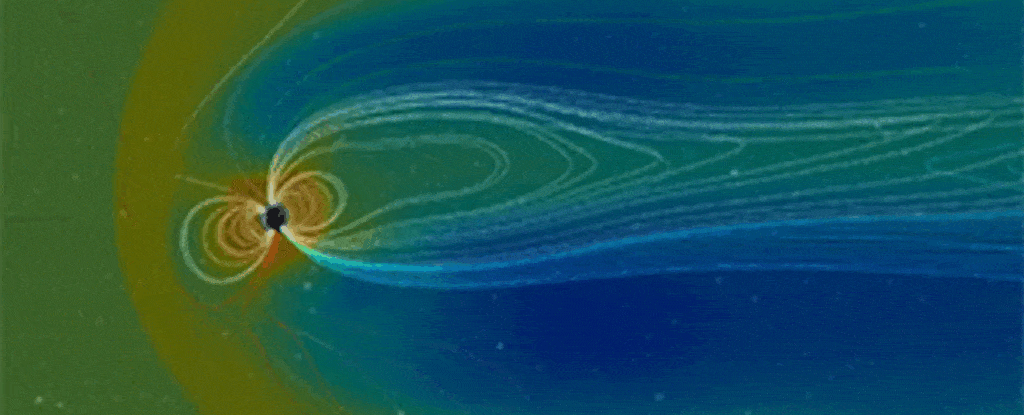
Approximately 40,000 years ago, Earth’s magnetic field underwent a significant reversal, a phenomenon thoroughly explored thanks to the interpretation of data from the European Space Agency’s Swarm satellite mission.
By integrating satellite data with insights into magnetic field line fluctuations, scientists from Europe were able to visualize the Laschamps event, employing natural sounds like creaking wood and crashing rocks to illustrate their findings.
This unique auditory representation, revealed in 2024 by the Technical University of Denmark in collaboration with the German Research Center for Geosciences, offers a distinct experience.
Earth’s magnetic field, generated by fluid metals in its core, extends thousands of kilometers into space, shielding our planet from harmful solar particles that could strip away the atmosphere.
Currently, the magnetic field lines create closed loops, flowing from south to north above the Earth’s surface and reversing direction beneath. However, at irregular intervals, the magnetic poles can swap their orientations. If such a flip were to happen today, compasses pointing north would suddenly direct towards the South Pole.

The most recent major event occurred around 41,000 years ago and is recorded in the Laschamps lava flows in France. During this period, the magnetic field weakened to just 5 percent of its current intensity, allowing a surge of cosmic rays to penetrate the atmosphere.
Sediments from glaciers and oceans contain isotopic evidence of this increased solar activity, with beryllium-10 levels doubling during the Laschamps event, according to a study recently published.
These isotopes are produced when cosmic rays interact with the atmosphere, resulting in ionization and affecting the ozone layer. The potential implications of this could include climate alterations and even the extinction of Australia’s megafauna, as well as shifts in human cave habitation, potentially linked to this historic event, as noted by recent research discussed earlier.
“Grasping the nature of these extreme events is crucial for predicting future occurrences, understanding space climate, and evaluating their environmental effects,” noted Sanja Panovska from the German Research Center for Geosciences.
The Laschamps reversal spanned 250 years, maintaining this unusual state for approximately 440 years, during which the magnetic field’s strength may have been reduced to about 25 percent of current levels as the north pole gradually shifted southward.

Recent observations of magnetic field irregularities, such as a decline over the Atlantic Ocean, have sparked discussions regarding a potential upcoming reversal. However, latest research indicates that these anomalies may not be directly related to reversal events.
The South Atlantic anomaly currently subjects satellites in its vicinity to elevated radiation levels.
Since 2013, the ESA’s Swarm constellation has been monitoring magnetic signals from various Earth layers, including the core, mantle, crust, oceans, ionosphere, and magnetosphere, to enhance our understanding of the geomagnetic field and forecast its variations.
Note: A previous version of this article was published in October 2024.
Related News









